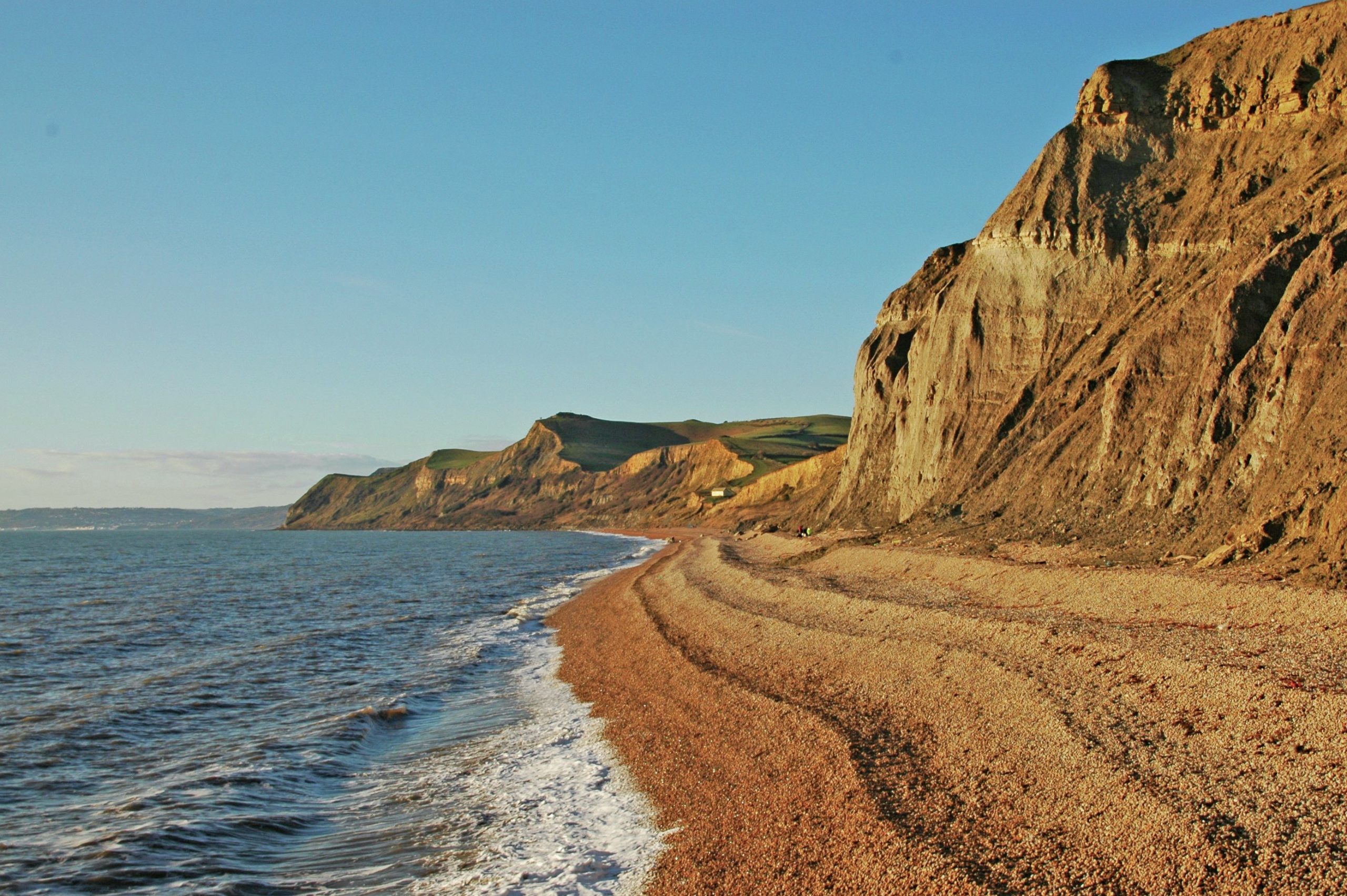
The Jurassic Coast stretches more than 150 kilometres across the Devon and Dorset counties on the southern coastline of England. It is a UNESCO World Heritage Site. This designation means that the site is considered to be of significant importance to the natural heritage of the world. The Jurassic Coast probably sounds like something to do with dinosaurs. It actually represents a lot more than that.
As the world has changed over millions of years, sediment and rocks have built up on top of each other. We can usually only see the top layer of these rocks, unless we dig deep into the ground to find older layers or ‘strata’ (layers of rock). Approximately 100 million years ago, huge forces tilted already ancient rocks on to their side, creating the Jurassic Coast that we see today. So we can see a transition in rock strata dating from 250 to 65 million years ago just by walking along the coast. Over this time — during the Mesozoic era (252–66 million years ago) — there were massive changes in this region’s landscape. In the Triassic period (252–201 million years ago) the region was an arid desert. In the Jurassic (201–145 million years ago) the ocean was filled with marine reptiles. The Cretaceous period (145–66 million years ago) was dominated by the dinosaurs.
Your organisation does not have access to this article.
Sign up today to give your students the edge they need to achieve their best grades with subject expertise
Subscribe




